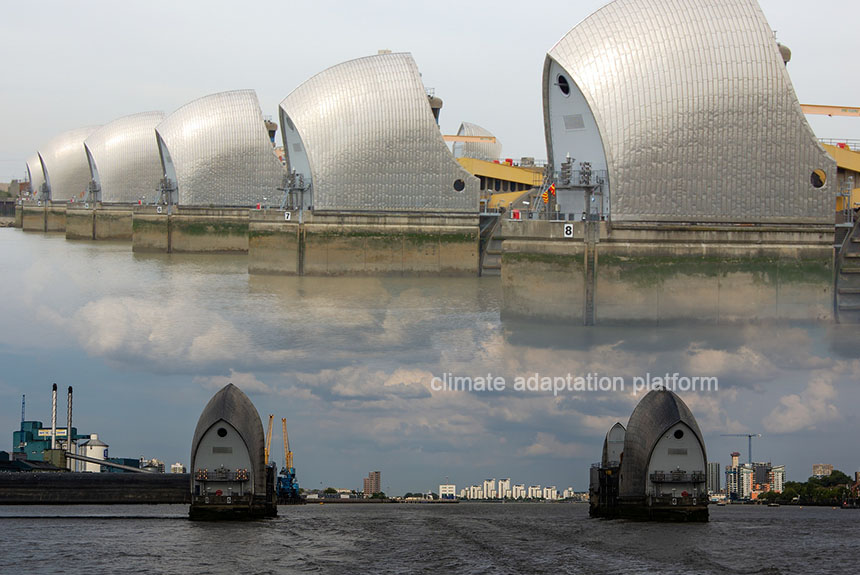In 2022, an intense heatwave hit London, and 2021 flash floods devastated the city. As climate hazards increase in frequency and intensity, London aims to be the global leader in climate adaptation and resilience, as it has been with climate mitigation for nearly two decades.
London already has plans to prepare and address climate change, from the National Adaptation Programme, which sets the actions its government and others will take to adapt to climate change, to the city-level programs to support short-term and long-term more extreme events, which include The London Environment Strategy, The London Resilience Strategy and The London Plan.
However, increasing threats from climate change require a step change in its preparation and planning for climate change impacts.
For example, the Thames Barrier, London’s colossal flood defence, has protected the city from tidal flooding since it became operational in 1982. However, with rising sea levels, the deadline for raising flood defences upstream of the Thames Barrier has been moved from 2065, the original plan published a decade ago, to 2050.
Like other countries experiencing more devastating climate events, they usually have contributed the least to the climate crisis yet suffer the most. This is also true in London’s poorest Boroughs – they are the hardest hit by the effects of climate change.
In 2023, the Mayor of London commissioned an independent review to assess the city’s preparation for climate change and make recommendations to advance its climate resilience.
The Mayor calls for the Review following London’s extreme flooding in July 2021, which resulted in a total insured loss estimated to be over £100 million, displacement of residents, and disruption of critical services. The heatwaves in 2022 caused more than 3000 heat-related deaths in England and 387 in London.
The extreme heat damaged green infrastructure, including street trees. Between June and August of that year, nearly 80 wildfires caused damage, stretching water supplies, melting road surfaces, and disrupting rail infrastructure.
The Review’s findings will be split into two parts. The first is the Review’s interim report, which sets out strategic and urgent recommendations.
The Review’s full report will be published later in 2024 and will include its findings and a complete set of recommendations. The interim report outlines 20 recommendations for strategic, delivery, capacity building or investment actions.
Source:
The London Climate Resilience Review publishes interim report. (2023). Retrieved from https://www.london.gov.uk/programmes-strategies/environment-and-climate-change/climate-change/climate-adaptation/london-climate-resilience-review



Leave a Reply